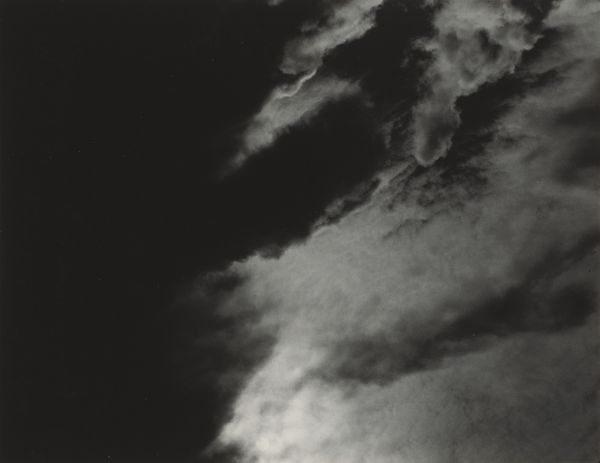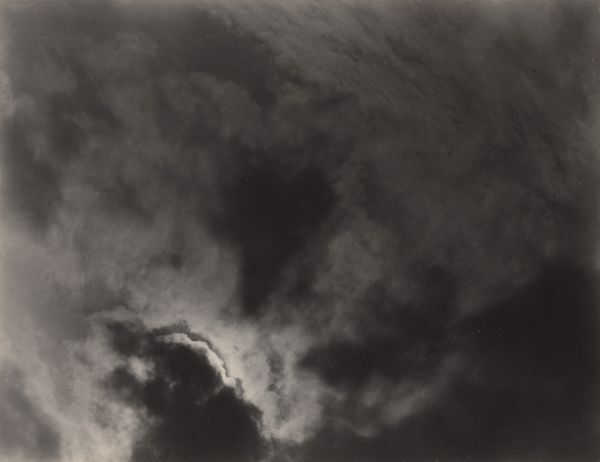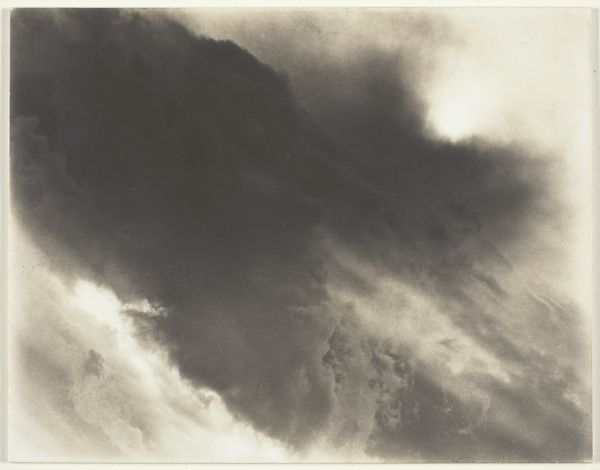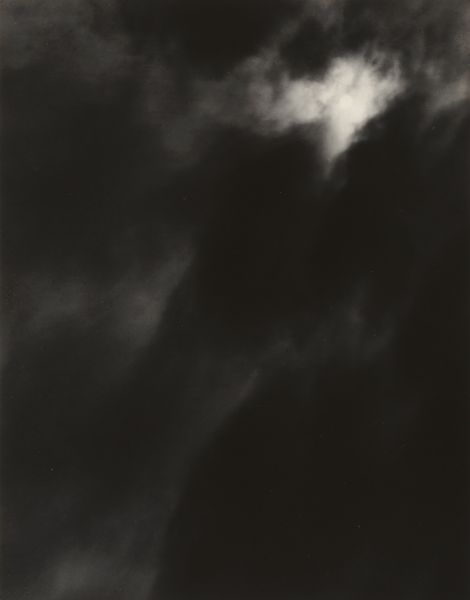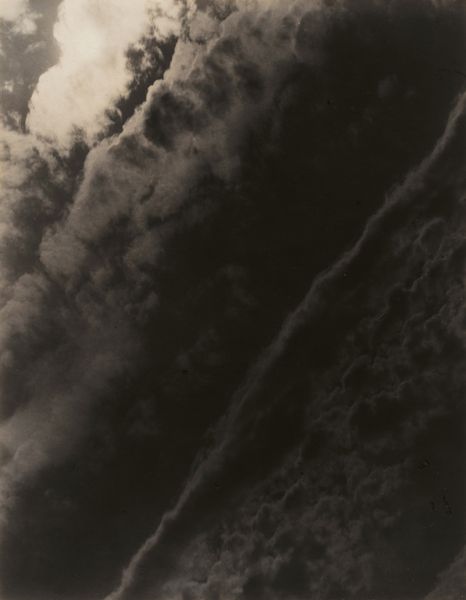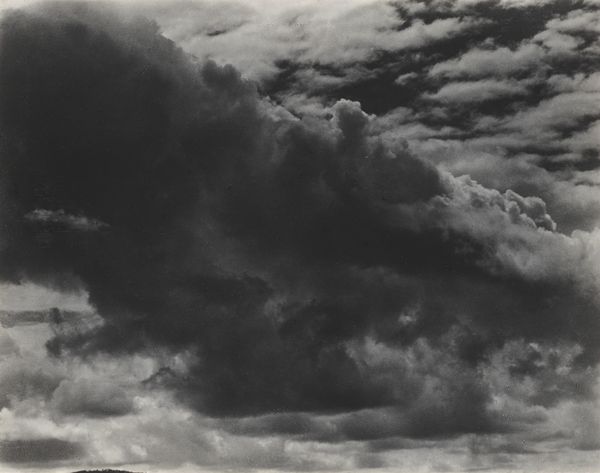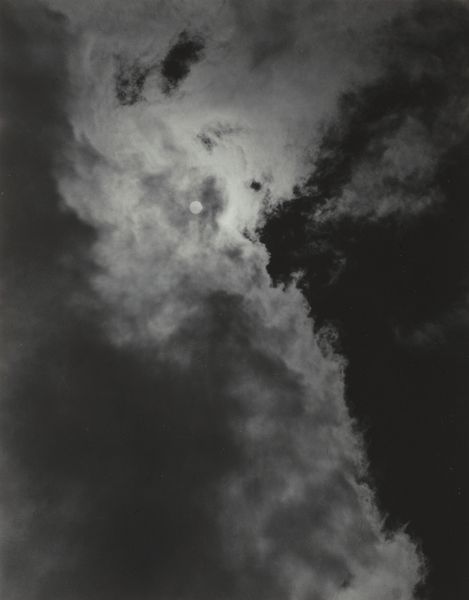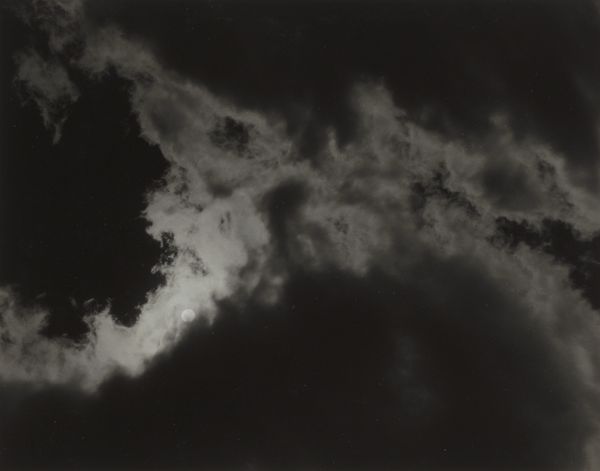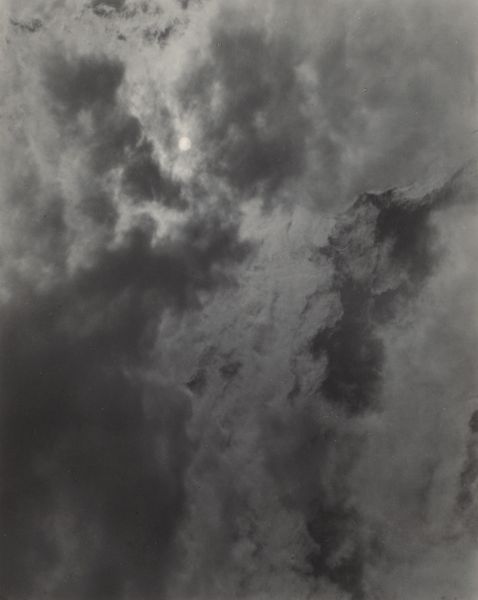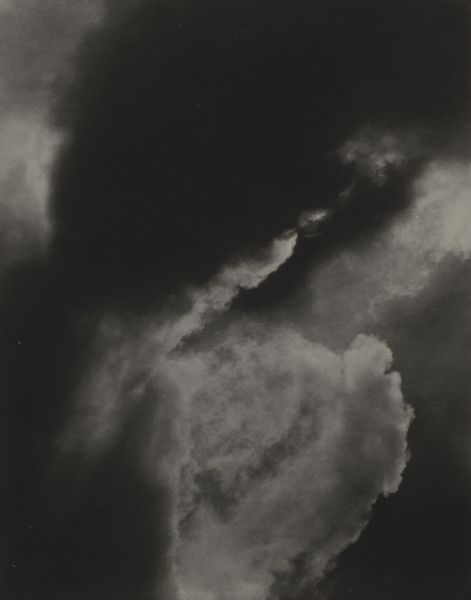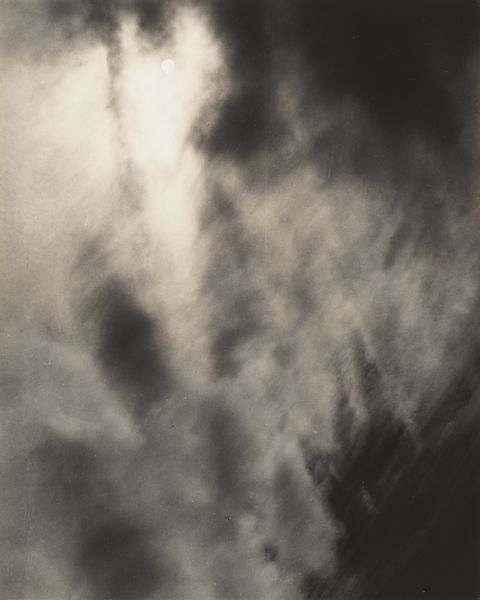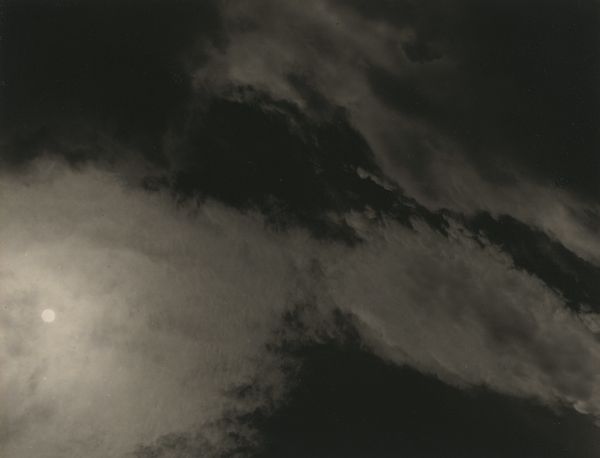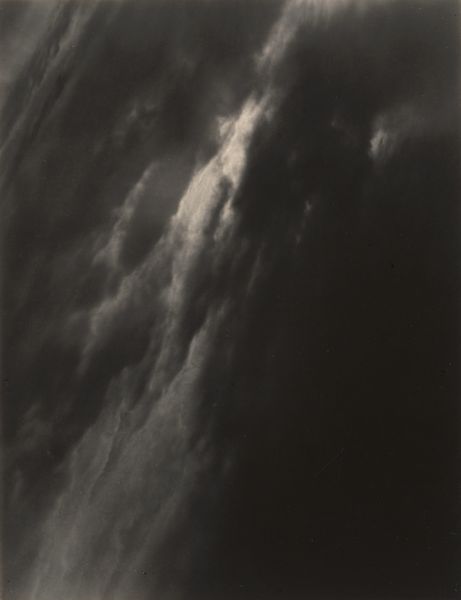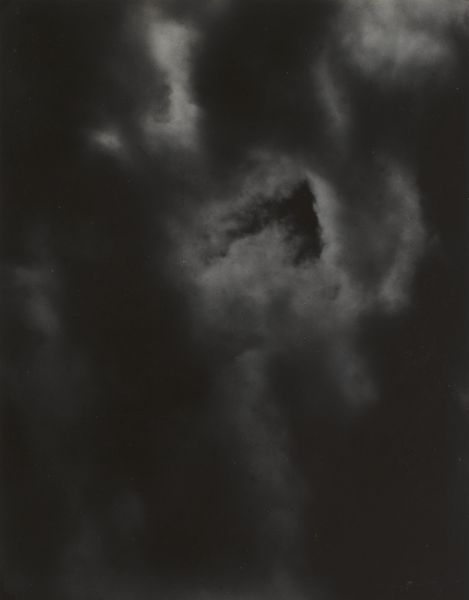
photography
#
non-objective-art
#
pictorialism
#
landscape
#
charcoal drawing
#
photography
#
abstraction
#
charcoal
#
modernism
Dimensions: sheet (trimmed to image): 9.2 x 11.8 cm (3 5/8 x 4 5/8 in.) mount: 34.8 x 27.5 cm (13 11/16 x 10 13/16 in.)
Copyright: National Gallery of Art: CC0 1.0
Curator: Before us is a photograph titled "Equivalent," taken around 1930 by Alfred Stieglitz. Editor: Stark, isn't it? Almost completely black and white, looks more like charcoal than a photo. I find its sheer darkness compelling, with those subtle gradations… It's surprisingly affecting. Curator: Stieglitz intentionally moved toward abstraction. He aimed to equate external forms with internal states. These cloud photographs weren't simply pictures of the sky. Editor: Ah, but it’s all about the darkroom magic too. Look at the tonality he achieves here. The density suggests platinum or palladium printing process to manipulate those tonal values... It really makes you think about photography less as a capture, and more as a form of…sculpting. A tangible record of light as material. Curator: Precisely. And this coincides with the rise of modernism and its investigation of materials, but Stieglitz's context includes his own gallery and advocacy for photography as fine art. He argued that a photograph could convey as much emotion and depth as any painting. He sought to elevate its status in the art world. Editor: Makes me wonder about the conditions he was working in – were the materials accessible? How much time did each print take to produce? It’s a radical break from traditional notions of photography as pure documentation. Each image embodies labor, decisions about technique and a vision he meticulously brought into physical being. Curator: Absolutely. And beyond that, it shifts the artistic focus from recognizable subjects to pure feeling, reflecting a broader trend in early 20th century art. This series in particular represented Stieglitz’s feelings about his relationship with Georgia O’Keeffe and more. Editor: Seeing it through the lens of production and labor only enriches that feeling for me, grounding the emotion in the real. He didn't just want to reflect it, but give it weight. Curator: Exactly. Stieglitz was interested in conveying something beyond the surface appearance, pushing photography toward non-objective art. Editor: The final product carries the physical traces of the artistic decisions. That matters. It moves "Equivalent" beyond just a pretty picture and firmly into material thought. Curator: It invites us to contemplate the artist’s intention and emotional life. It's about understanding what skies might be equivalent to. Editor: In the end, that fusion of intention and the physical effort resonates profoundly. Thanks to him manipulating materiality so skillfully.
Comments
No comments
Be the first to comment and join the conversation on the ultimate creative platform.
